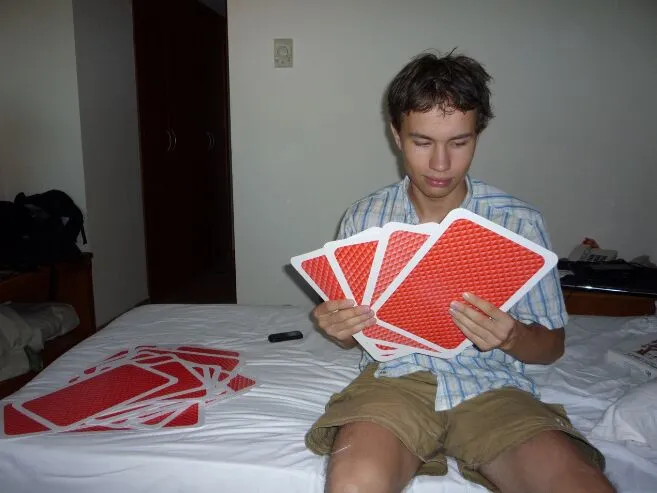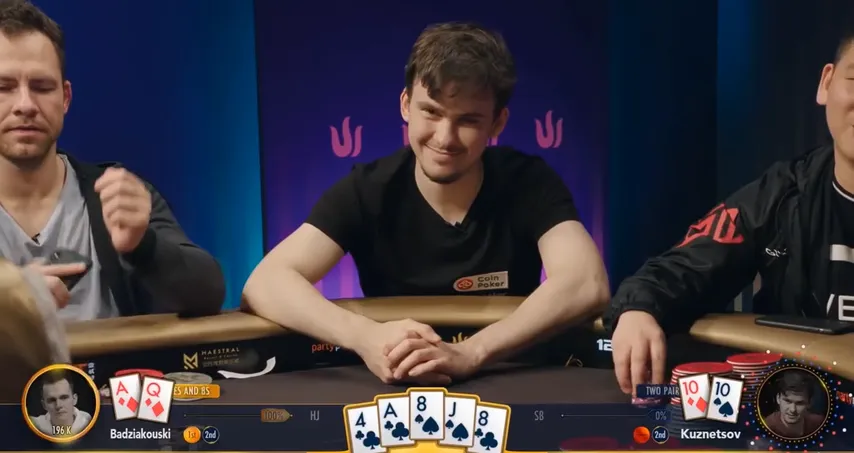Before solvers became so woven into the fabric of poker, it wasn't easy to sell that software. When Oleg Ostroumov developed and started selling his solver in 2013, there was barely any market for it. He's kept relatively silent about the sale and development, until he recently shared his story.
After a few hurdles, Oleg managed to sell his software to Kanu7 and Trueteller. He set his price between $50,000 and $100,000; an unimaginable sum in today's world. Piosolver currently sells for less than $250.
We'll explain what Oleg made, how he collected half a million dollars by age 23, and what he is up to now.
Who is Oleg Ostroumov and Why Does He Matter?
Oleg Ostroumov studied engineering and mathematics in Moscow, had a love for poker, and a desire for cash. Even in high school, he'd been a stand-out in programming contests. It was around this time when Oleg first heard about playing online poker for a living. A year and a half later, he'd won enough to rent an apartment.

Poker was a new frontier though and there was very little competition or similar products on the market. Finding Nash Equilibrium was no small feat, though he was partially successful before long.
It took Oleg six months to create a working solver for No-Limit Holdem. He had created the first solver that high-stakes professionals would soon be talking about – and using.
With two active players, a flop, and certain bet sizes, Oleg's program was groundbreaking. It was ahead of its time for some, who doubted its ability to produce results. Even Tom Dwan had some doubts to share on the forums.

Nevertheless, superstars Kanu7 and Trueteller were among the first customers.
Time to (Hopefully) Sell this Solver
It's tricky to sell something that's the first of its kind; even trickier when you are only 22 years old, as Oleg was. Cardrunners EV was already being sold, but it was much more trivial and wouldn't meet the needs of high-stakes players. That program cost $50 to use.
Oleg used the $1,000 poker coaching rate to help him choose a price. He reasoned that, since his program offered near-limitless tutoring, even a $1,000 fee was far too low.
He settled on the eye-watering sum of $50,000 to $100,000 per license. He had a potential buyer lined up already, a young millionaire online player called Trueteller.

Negotiating a Six-Figure Price with Trueteller
Somehow, Oleg managed to connect with Trueteller (Timofey Kuznetsov), a player known for secrecy. In an exclusive Russian interview with Gipsyteam, he talked more about early Nash calculations, saying he used to write them on napkins. Oleg's program could provide a new level of convenience, accuracy, and profitability – so of course, Trueteller was interested.
He and Oleg started chatting back and forth about an exclusive deal for upwards of $100,000. That was fantastic news, but progress slowed down. For such a large sum of money and the ongoing promise of exclusivity, there needs to be some mutual trust.
Oleg became a little irritated as the weeks went by, saying to Trueteller, “Given the length of these negotiations, and your current exclusive access, I think a fair compromise would be for you to pay $5,000 a week during this negotiation period.”
Trueteller retorted, “Why don’t you pay me $2,000 an hour while we talk? That’s what I could be earning in the game right now.”
Oleg wasn't bringing in much money while he negotiated with Trueteller. That added some urgency and he was forced to look for new buyers.
Kanu7 and Friends Close $200,000 Deal for Olegs Solver
After showing his solver to Kanu7 and his group of high-stakes friends, it looked like Oleg was back on track. He only had about $6,000 left to his name, which gave him about 3 months to close the deal.

The group was massively interested, but the pressure was on Oleg to pen the deal. He'd even mistake refrigerator noise for Skype notifications during the height of his desperation.
In April 2013, the deal for the world's first high-stakes Holdem solver was inked and signed. 6 players could exclusively use the software, with one even jetting to an island without wifi to completely focus on it.
Oleg also created an Omaha solver the same year, which he collected $300,000 for. That's half a million dollars in 2013 from solvers when most players had no idea what they were.
These days, solvers are affordable and run with fewer requirements. Check out the software in our shop for the lowest prices and full guidance through setup.
What's Next for Oleg?
After his first poker solver projects were under his belt, the industry shifted. The high prices of 2013 wouldn't fly today, with most programs being offered for just a couple hundred dollars. Creating software for poker professionals made Oleg realize that his, "true passion lies in developing complex programs rather than playing poker." He's worked on poker room development, stock trading tools, and selective investment ventures.
Oleg's LinkedIn profile says he's currently a Senior Software Engineer and AI Researcher with a company in the Netherlands. He's avidly interested in AI, especially language model training.


















